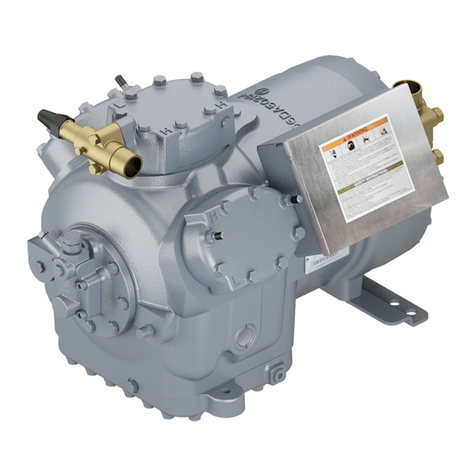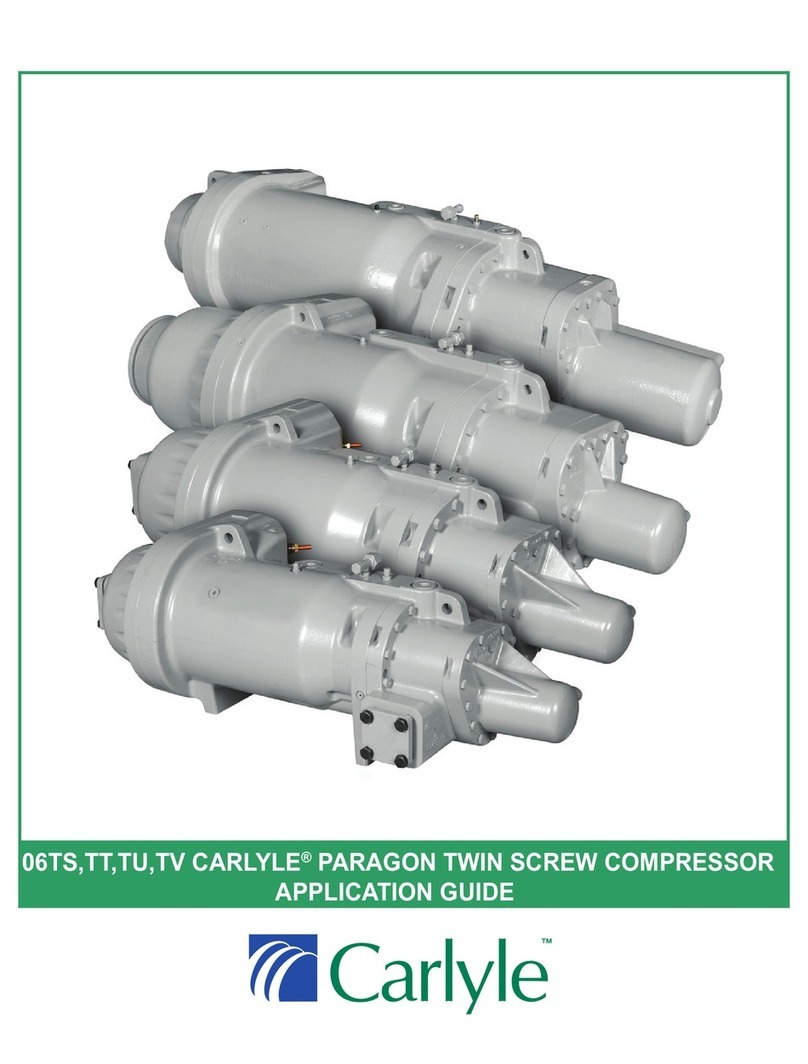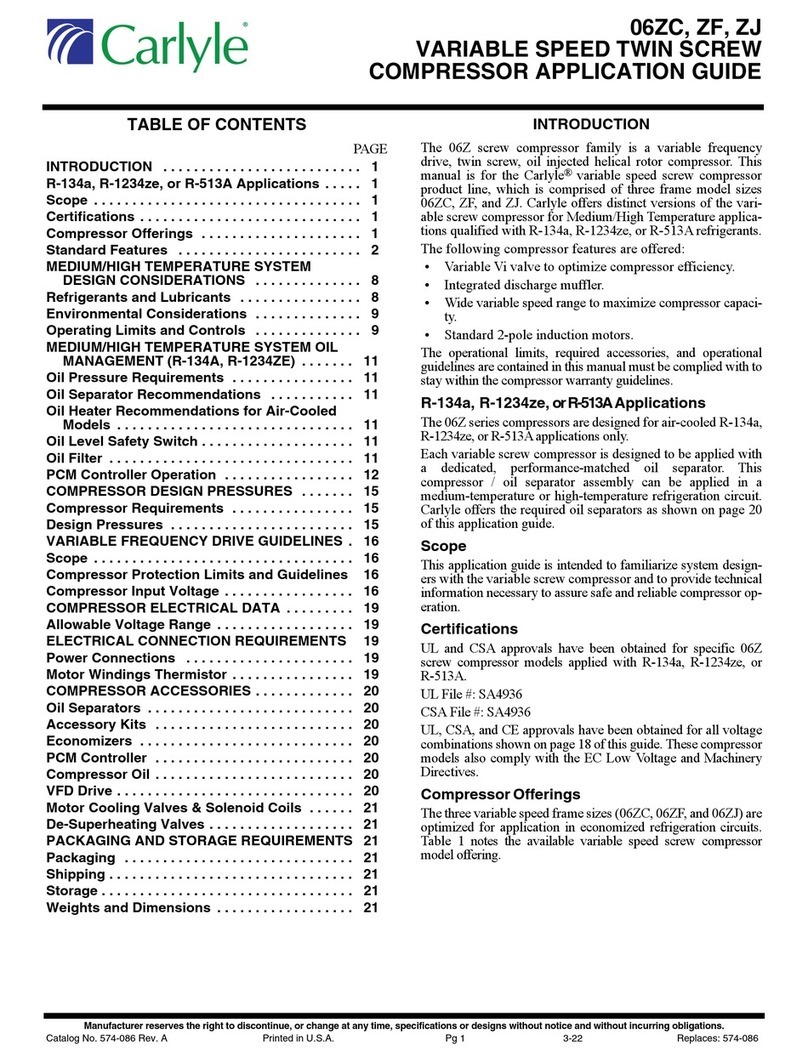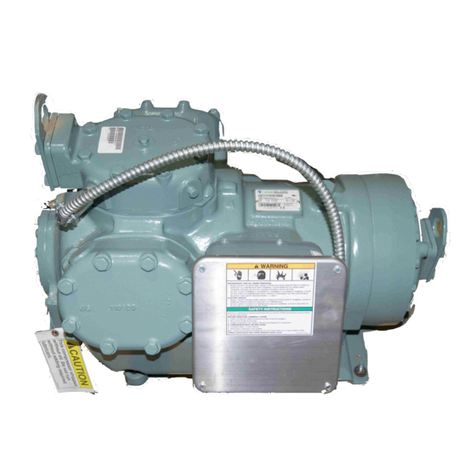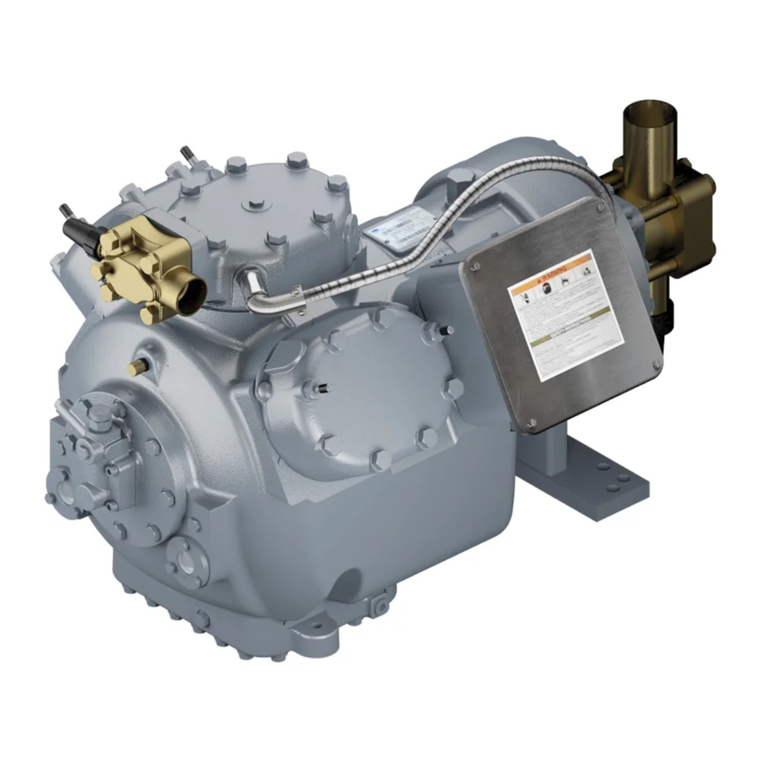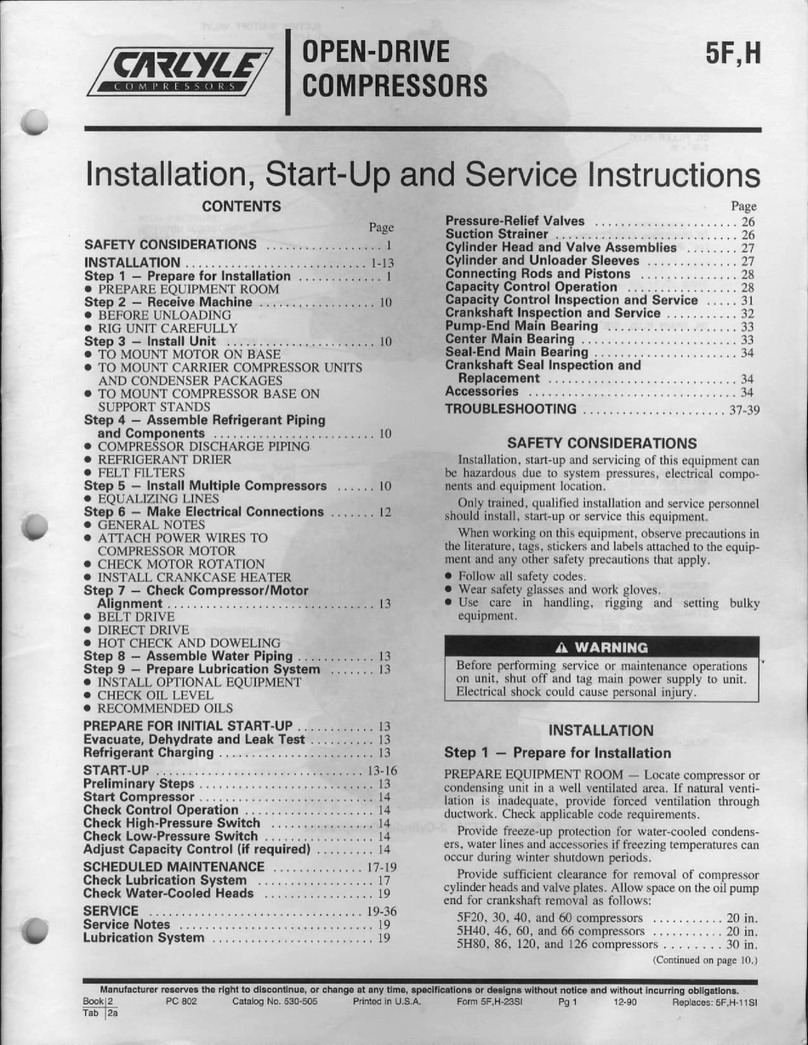Section 4 — Refrigerant Management
System
4.1 Suction and Interstage Piping.................23
Section 5 — Electrical Specifications
5.1 Thermal Protection................................. 25
5.2 Screw Compressor Motor Protection......26
5.3 Circuit Breaker Tables.............................27
Section 6 — Motor and Discharge
Temperature Control
6.1 Carlyle Electronic Module (CEM).............29
6.2 Discharge Temperature Control.............. 29
6.3 Motor Cooling Control............................29
Section 7 — Subcooler Selection and
Performance Data Adjustment
7.1 Subcooler Selection................................30
7.2 Subcooling Correction............................30
7.3 Superheat Correction............................. 30
7.4 Carlyle Software..................................... 30
Section 8 — 05T Open Drive Application
Information
8.1 General Information................................31
8.2 Compressor Dimensions........................ 31
8.3 Compressor C-Flange............................ 31
8.4 Compressor Coupling............................ 31
8.5 Overall Dimensions.................................31
8.6 Carlyle Electronic Module....................... 36
8.7 Motor Selection......................................36
8.8 Performance Factors..............................37
Section 9 — Start-Up Procedure
9.1 Oil Charging Procedure.......................... 38
9.2 Testing the Control Circuit...................... 38
9.3 Pre-Start-Up Check List.........................38
9.4 Start-Up Worksheet................................39
Section 10 — Accessory
Part Numbers............................................... 40
Appendix A LonCEM — Electronic
Module
Appendix B Original CEM — Electronic
Module
Introduction
Summary of Control Points...............................1
06T Model Number Significance.......................2
Compressor Physical Dimensions.....................2
Section 1 — General Information
1.1 Certification..............................................4
1.2 Screw Compressor Size (Displacement)...4
1.3 Compressor Mounting..............................4
1.4 Oil Type....................................................4
1.5 Ambient Conditions..................................5
1.6 Installation Environment............................5
1.7 Pressure Relief Valve................................5
1.8 Discharge Check Valve............................5
1.9 Compressor Inlet Screens........................5
1.10 Service Valves..........................................5
1.11 Condenser Pressure Control....................5
Section 2 — Operating Specifications
2.1 Operational Envelopes.............................6
2.2 Vapor Temperature Limits........................ 7
2.3 Minimum Oil Pressure Differential.............7
2.4 Operating Speed Ranges.........................7
2.5 Inverters and Refrigerants........................8
2.6 Compressor Cycling................................ 8
2.7 Mechanical Unloading..............................9
2.8 High Discharge Pressure Control.............9
2.9 Low Suction Pressure Cut Out.................9
2.10 Volume Index (Vi) Control....................... 9
2.11 Reverse Rotation Protection....................10
2.12 Mufflers...................................................10
Section 3 — Oil Management System
3.1 Oil Separator...........................................11
3.2 Piping Configuration................................12
3.3 System Oil Charge..................................12
3.4 Oil Level Switch...................................... 12
3.5 Oil Pressure Protection........................... 13
3.6 Oil Solenoids...........................................13
3.7 Oil Cooling Systems................................14
3.8 Oil Cooler Selection.................................16
3.9 Oil Filter...................................................20
3.10 Oil Sump Heaters................................... 20
3.11 Oil Sight Glass........................................20
3.12 Oil System Schematics...........................21
3.13 Oil Line Manifold Selection Table.............22
Contents

